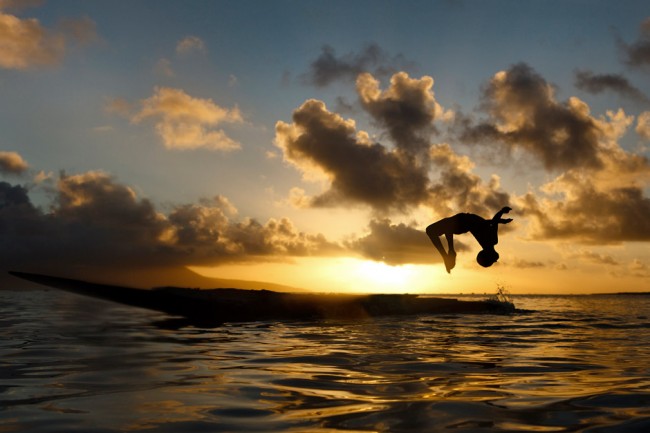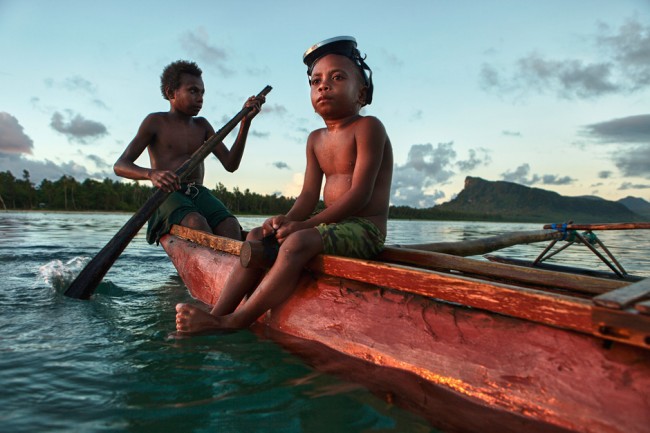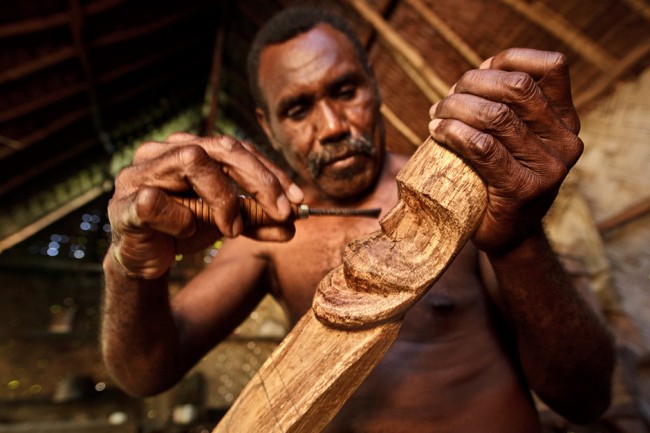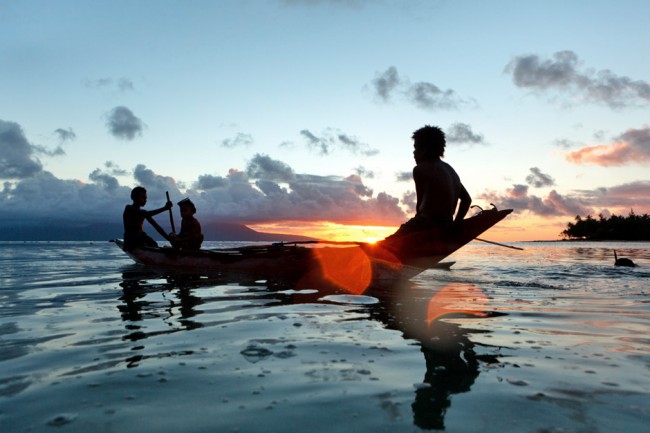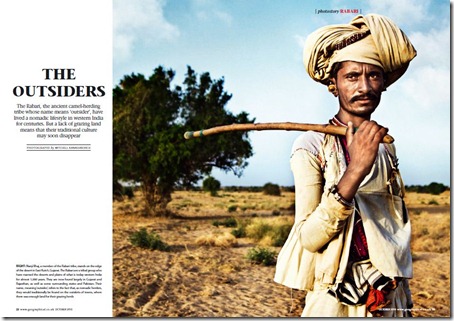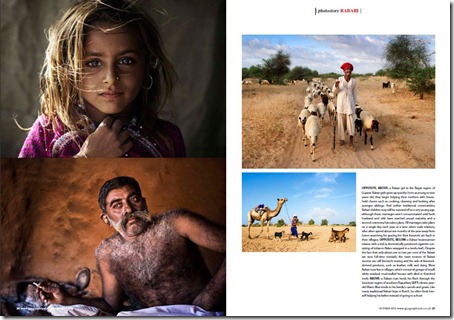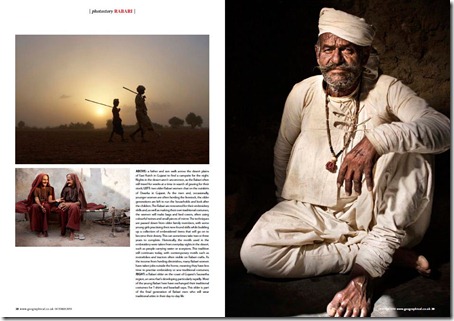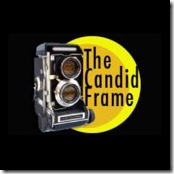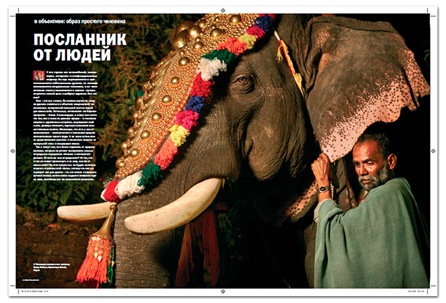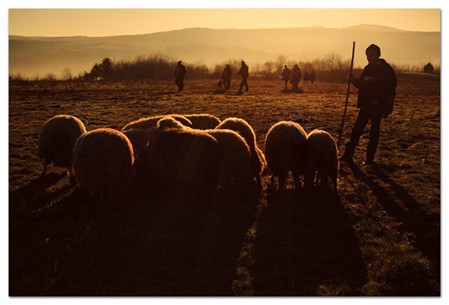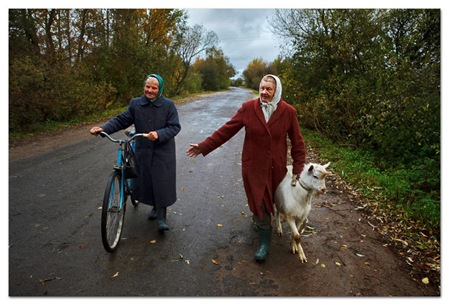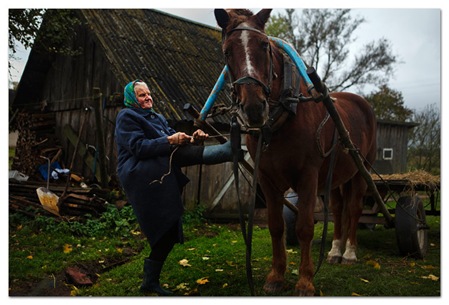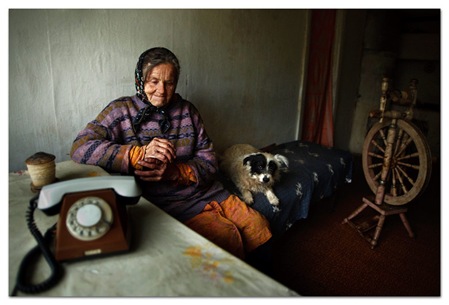The fascinating cultures, the breathtaking landscapes, the ever present feeling that you are in a different time, a different dimension—this is what I absolutely love about Ethiopia. The constant feeling of being a human piggy-bank, the challenges in doing the simplest of things, the often occurring feeling that your new “friends” are measuring you up to see what they can extract from you—this is what I’ve come to hate beyond words about the country. I’ve been in Ethiopia for a bit over four months now. I know that many of the readers of this blog are photographers and travelers, some of whom have aspirations to come here. For this reason, I feel that I should write an account of sorts. One that is fairly uncensored and touches on the good, the not so good and the plain ugly sides of this incredible and incredibly challenging country.
Donsol and Whale Sharks - Sometimes it's good to just travel.
As travelers we often have certain things we want to do when we visit places. Sometimes it’s just to make a tick on the “to-do” list. Other times, it’s because we really, really want to do those things. Swimming with the whale sharks at Donsol belongs to the latter category. I really, really wanted to do it. I was curious about what it would be like, ever since a friend back in Australia told me that there’s a place in the Philippines where you are almost guaranteed the chance.
Breathtaking Philippines
The Philippines are officially going into my books as one of the most beautiful countries I’ve visited, at least as far as breathtaking scenes per square kilometer go, they’re plentiful. The spectacular combination of mountains and water is everywhere and as I might have mentioned a few times, I am truly a sucker for this kind of scenery.
To Leave the Place you Fell in Love with
Every traveler knows how it feels. When you fall in love with a place, you come to appreciate it on so many levels. The natural beauty, the smells, the sounds, the smiles. You’ve connected with the locals, you’ve made friends that will remain close to your heart. It’s sad saying “Good bye”. You don’t know if it’s a “Good bye forever” or a “See you again some time”. You hope it’s the latter. But you never know. If you’ve had your share of travels and good byes, you understand that places and people change. Nothing in life is set, there are no guarantees.
Dear aspiring travel photographer
Delayed New Year’s Greetings
Alona Beach is the kind of place that I usually cringe just thinking about. It’s full of resorts, cheesy bars, overpriced soulless food and annoying vendors. Nevertheless, I decided to come here, mostly because I was traveling with a friend who had been getting tired of not having internet or any foreigners around, but I also wanted to give it an honest try, since the last time I was in a place remotely similar (or I thought it was similar) to Alona Beach was in Goa, India and I actually had one of the best New Year’s Eve celebrations of my life.
Christmas with turtles and coral
Those who know me even a little, know how frustrating and irritating I find Christmas to be. Not only Christmas, but the whole period that leads up to it. I’ve blogged before that my work as a Santa Claus photographer (seeing the ugly side of Christmas) back in my university days might have had something to do with it, as did undoubtedly the fact that I spent my childhood days in communist USSR, where Christmas was purely a religious thing and religion was frowned upon.
A few days in the Cordillera and some thoughts
Into unchartered territory
I’ve well and truly settled back into the “other” world in which I sometimes live. That is the world of editing and post processing images, staring at the computer for over 10 hours a day and generally not getting out much, except to walk my dog, to whom I’m thankful for giving me a reason to do at least that much.
The crazy, frustrating world of ours

I’ve been back in Sydney for some time now. With all the trips back and forth over the years, it is no longer strange to be jump between these worlds, which are so different from each other.
I keep thinking of Vanuatu. In particular I’ve been thinking of the big question of development there, the tourism development or whatever development for that matter. As I had mentioned in past posts I photographed some people and places in order to help promote a couple of the lesser known regions to tourists, in a sense to develop tourism there.
Before I left Vanuatu I managed to get a photo story into Air Vanuatu’s inflight magazine “Island Spirit”. Besides being on the airplanes the publication can be found at every single hotel and guesthouse around the bigger towns of the country. That will be a good little push for George and South West Bay, hopefully. But I keep thinking about where the potential development, where all that interaction with tourists and all the building of new guesthouses, new facilities will lead. Will it really be positive, as I perhaps naively hope? To be totally honest, the country for most part is perfect, or rather it would be perfect, if there weren’t these conflicting views that the modern, developed, “white-man” world is bringing.
Prior to leaving the island of Santo I met an interesting young anthropologist. He had a very cynical view of where things might head. History, he said showed that development had never been good for societies similar to that of Vanuatu. Urban drift, alcohol consumption, increased crime rates - these were all byproducts of the so called modernization. I could only imagine in horror how the wonderful places I’d been to might be affected if things don’t go quite as planned.
In some ways I agree with the anthropologist, but another part of me feels that at times the thinking and reasoning of academics is quite unrealistic. He suggested that it would be better to keep things as they are, the locals don’t need all this crap that we have, they’ve been living for hundreds of years without it. Agreed. But then I had been in Vanuatu long enough and had spoken to enough locals who lived in between these two worlds - the modern and the ancient and they were desperate to see more of our world, to do those things that the “white-men” get to do. Young, a good friend I made on the very remote Rah Island had worked in Port Vila - the capital of Vanuatu for a few years, he acquired a taste for TV and he desperately wanted to see different parts of the world. When I told him that what they have is special, that they don’t need to seek happiness elsewhere or to change things at home, he replied “Yes, but I want to see why it’s so special here. I want to see other countries and to be able to decide for myself.” Fair enough, I think.
He also said something that was very simple and ultimately really insightful. “The white people used to come here and say - you must all change, become modern, wear clothes, stop your rituals, worship Jesus. Now they come and say - go back to the ways of the past, become more traditional, we want to see more of your culture. What are we to do? We are very confused now! What is it exactly that you want from us?” What Young said reflects the way many young Ni Vanutu people from the islands must feel. He’s confused and somewhat frustrated, and; who’s to say that development will answer his questions? Who’s to say that Port Villa isn’t going to become the next Port Moresby (considered by many one of the least livable cities in the world)? If Port Vila is indeed heading that way, tourism will be a pretty small concern in comparison the multitude of serious problems that will arise.
And so I keep asking myself. On the one hand; what is the point of development in a place like Vanuatu? On the other hand; what is the point of preserving things, if all the young locals want to do is watch “Rambo” and “Lost”? Can they really be blamed? Are they lesser people than us that we should decide what’s good for them and what’s not? And then ultimately I ask myself; what is the point of doing what I started? Meaning helping the locals attract more tourists to their areas and in effect “develop” them.
I guess I find comfort in one story that was told to me by an American NGO worker who I met along my journey. He had the same dilemma as me at the beginning of what has now been a four year commitment to developing medical centers around the country. He once asked a more experienced NGO worker: “What is the point of what we’re doing? These people survived for so long without us. Are we just f--cking up their world, by pushing them forward and changing their ideology with what we are doing?” To this he got the following reply. “Development is inevitable, you aren’t going to be able to stop things or go back to the stone age, but things can move forward in different ways. Development can put everything on its head and basically destroy an entire society or it can be brought on more gently, more gradually and that will lead to a much smoother transition and a less disastrous result. You’re one of the people who’s trying to achieve the latter and that is a good thing.”
I hope that my involvement would put me in the latter category too. I should also mention that in Vanuatu development has so far only been “passed down” to the locals from the foreigners that have invested in the country (or before colonized it). The foreigners are in power, while the locals are mostly picking up the crumbs of the benefits of this “development” and they are often having to do this away from home, because development is centered only around the capital and the island of Espiritu Santo.
Tourism outside of the main islands, would actually put a lot of people in an entirely different position. They would not have to go outside to earn their money, they would become business owners (some already are), they would be empowered to make their decisions and whether that would be to go back to the ways of the past or to watch DVDs well, that’s a decision which I believe they deserve to make.
Well, that’s about it for this post. I needed to get those thoughts out of the system. I invite anyone who has read this post in full to share their opinions; whether cynical or not I am very interested to read what other people are thinking. What have some of you learned from your journeys or perhaps from living in countries which have seen rapid development recently?
You might not hear all that much from me in the coming weeks (though I’ll try). I’ve been busy archiving my collection with the aim of putting up on Photoshelter. I’ll also be slightly redesigning the website and the blog. Good changes are on their way. Stay tuned.
Close to Paradise
As I mentioned in my last post about Bob, my photography to assist tourism development continued in Rah Lava and to a lesser extent the bigger, neighbouring Mota Lava. The two islands belong to the very remote Banks group, they’re pretty much in the middle of nowhere, surrounded by endless stretches of the Pacific ocean. If you’re looking for a place to completely escape the busy, modern world and you like the sea, this is the place to escape to.
I’ve seen a lot of beautiful places over my travels and it’s not that easy to impress me anymore, however, I am a sucker for sea and mountains and whenever I find a place with both, well, I instantly fall in love. It’s not that I like to climb mountains, it’s that I love the sight of mountains rising over the sea. In my books it’s hard to come up with a better backdrop to a photograph than something like that. The beach and the lagoon at Rah Lava offered me those very kinds of backdrops, along with some fairly thick, lush greenery in the island’s interior. Besides the great scenery Rah Lava had something else to offer and that was some incredibly amazing (usually very expensive, but not here) seafood – I managed to live out my dream of eating lobster for breakfast, lunch and dinner (ok, I’m sick, I know, but it’s so tasty). Of course, to top it all off, as elsewhere in Vanuatu the people were absolutely wonderful. Quite naturally, I had to stay a while in Rah and I did, it was my longest stay in Vanuatu so far – two and a half weeks.
The reason I came to Rah was because George Thompson, the man I was helping out in South West Bay advised me to make the journey there and help out a man (in the same way – take photos for marketing) by the name of Luke Dini or Father Luke as he introduces himself (he’s a retired pastor). Both George and Father Luke were members of Vanuatu’s bungalow association, in fact they were probably the first two men to join a few decades back. The association was meant to set some sorts of standards for bungalows as well as service in those bungalows. The government was meant to help out and direct tourists to those places which were a part of the association.
It appears however that whatever project the government of Vanuatu undertakes, that project is destined for not fulfilling its potential and that has certainly been the case here. Father Luke opened his Bungalow in the seventies and he waited for fifteen years for the first foreign visitors, who happened to be a group of New Zeland Yachties needing to stay on land for just one night. After that there were no more tourists for another five years, but for whatever reason Father Luke didn’t abandon his idea of running a bungalow.
For years the place would receive just a handful of visitors a year, most of them - discount-seeking government workers who found the bungalow through the association (they seem to be the only people who turn to the association to find accommodation). From my understanding, the income was meagre, but Father Luke understood; for a small community like that of Rah Island, tourism was the only kind of business that would empower the locals and give them a chance to earn a decent enough income. Perhaps more importantly, it could keep the youth closer to home and this is a big thing, considering that many young, ambitious Ni-Vans leave remote places like Rah in search of jobs on the more developed Efate (where the capital Vila is) and Santo (where the second capital Luganville is located). Most often the youth come back, disillusioned, disappointed in their experiences in the world outside. The money they earn on the more developed islands is small in comparison to their sky-high expenses of living away form home. Things like food and accommodation are free for them, while they stay close to home in the huts that they build, near their gardens and the sea in which they know every fishing spot. In the outside world everything has a price tag and because of foreign investment and influence, things are pretty much out of reach for the regular citizen of Vanuatu.
When the youth come back to places like Rah after a disappointing tenure in the capital, they find themselves in an unusual situation. Having been exposed to the world of televisions, DVDs and night clubs they can’t look at life in a quiet island paradise without modern facilities in quite the same way. Sometimes they come back with new skills, which they can’t use because there are no industries of any sort. They’re left in-between two words, confused, a little frustrated and dreaming of what things would be like if their fortunes turned.
Father Luke had a vision, he felt that the presence of tourists on Rah could contribute to the entire community. Starting from the canoe-taxi across the lagoon from “mainland” Mota Lava, which every visitor must take to get to the bungalow, to the fishermen, lobster and coconut crab catchers who sold their catch to his the restaurant, to the traditional dance performers and so on. Everyone would benefit, everyone interested would have a chance to earn an income which was while fairly small, went a long way on an island like Rah. I was surprised that Father Luke was able to see such a big picture, this was very unusual for a man from a remote, forgotten island in the Pacific.
It turned out that Father Luke, besides being a Church pastor in the past, was a politician in the more distant past. In fact he was second in charge of all of Vanuatu during the colonial years and secretary to the president, once Vanuatu gained its independence. I was pleasantly surprised that Father Luke resigned from his high position because he strongly opposed the increasing corruption in the higher ranks of the government. It was then only at the beginning of its growth, these days the corruption in Vanuatu is legendary.
“My wife liked living the lavish lifestyle, having chauffers and eating in restaurants, so she didn’t want me to quit. I told her this; we can continue like that, but in a few years you will lose your husband, for I cannot stand living a lie, I’ll probably die from stress, from a heart-attack or something like that. I want to keep my dignity and to be able to look in the eyes of the people back home on Rah.” These were Father Luke’s words, to which his wife replied – “Let’s go home” meaning their modest house on Rah Island.
And so in some ways Father Luke is similar to George Thompson. He is a man who puts dignity and community above money and easy life. Thankfully, unlike George, after years and years of struggle things have taken turn for the better for Father Luke’s bungalows. They probably get close to thirty visitors a year on Rah Island and although the number does not seem impressive, it is when you consider the beginnings.
Since this is a photography and travel blog, I feel obliged to tell the readers about Rah Island as a travel destination, not only a photography destination. As I mentioned, it’s the ideal place to escape the hustle and bustle of the modern, developed world. It’s still not luxurious comfort living, but there is solar power, a shower and flush toilets – things that are not so common in the outer islands of Vanuatu. Father Luke’s bungalows are pretty cheap too, not South East Asia cheap, but fairly cheap by other standards. It’s about US$30 per person per day and that includes food, which after my recommendation will include more fresh fish and the possibility to eat lobster and coconut crab whenever your heart desires.
Ok, that’s enough of that. Let’s get to the photographs. The one above is of a local kid doing a back-flip from a canoe in the lagoon.
Saron returning from her family’s garden with the village dog. Vanuatu is one of the greatest agricultural societies on the planet, every family has a garden and every village family lives from one. The gardens are usually located somewhere in the bush and almost daily a family member will venture out there in order to tend to the crops or to bring some produce back home.
Silas and Young lobster hunting. The men look for familiar spots where they’re likely to find the crustaceans. The easiest time to catch them is during the moment of feeding, which lasts for approximately half an hour in the evening.
Silas putting one of the lobsters into the boat.
While on the subject of edible crustaceans, here’s another one – the legendary coconut crab. Near extinction in most of the world, the coconut crab is in abundance in lots of the Torba province, of which Rah and Mota Lava are a part. As you can see they grow pretty big, in fact according to Wikipedia, it is the largest-living arthropod on the planet. Those claws mean business too, Joseph is very experienced at catching and handling the creatures. Here some village youngsters watch him as he separates the coconut crab from his bate – the coconut.
As I mentioned in the last post, the men of Vanuatu are generally pretty amazing tree-climbers. By the time they’re teenagers they are strong enough to climb some crazy-big trees. David is one such teenager. As many other boys his age he climbs up trees to hunt (with a sling-shot) small birds and flying foxes, a delicacy in many parts of Vanatu.
Another image of Bob and his son Jeff. I wanted to include this one here just to emphasize the incredibly clear water around the reef. I’d dreamt about being in places like this for a looong time, now I feel like I’m getting a little spoilt.
The view out the front of the bungalow, just after sunset. Like I said, I’m a sucker for sea and mountains.
Dimitry (front) is one of Father Luke’s grandchildren. The kid is a CHARACTER, that’s for sure. He’s only four, but he’s very savvy, Tanya had to work real hard to become his buddy, he’s the type of kid who you have to constantly attract with something interesting. Dimitry is also unusually interested in his tradition (for a small child) he always tries to perform the island’s famous snake dance with the bigger boys and has a great sense for music and rhythm.
Franklin is a master wood carver, he creates some true masterpieces. Interestingly though, while Franklin learned the technique of wood-carving from his father, he learned how to carve more complex traditional works from photographs taken in a Museum of Pacific Arts somewhere in Europe. His ancestors sold a lot of the carvings to Europeans over a century ago and even the elders in his village (on Mota Lava) had never seen the carvings in the photographs.
Through a strange twist of fate, the “white men” who laid path for the destruction of the culture of the inhabitants of Rah and Mota islands over a hundred years ago also managed to save a part of it and to indirectly help revive the same part of that culture many decades later.
Franklin is a fascinating man and not only because of his determined approach towards wood-caring, it wasn’t unusual for him to go through five pieces of wood before getting things just right. Franklin is also a field worker of Vanuatu’s cultural centre, which means that he studies and records his own culture. Had I had more time I would have gladly spent hours chatting to the man, asking him endless questions.
The snake dance of Rah has become famous all over Vanuatu. It is usually performed at weddings and special occasions, but these days it’s become a regular performance for tourists too. I have to say that usually I think stuff like that is lame, but I’ve reconsidered that approach in Vanuatu and particularly with the snake dance. We watched it about 4 times and every time it was pretty cool.
A dancer having his body and face painted for the snake dance. I don’t know if anyone who is not part of the dance group has been behind the scenes for this dance before, back in the day seeing the preparation was strictly taboo. The paint used, as well as the material of the costumes were the performers’ secret and if anyone were to find out that secret they may have very well been killed, such was the kastom law.
A view from the rock of Rah, one of the most accessible high view points I’ve ever come across (you can get there in about 10 minutes from the village). No photograph will do it justice. From the rock you have a 360 degree of the surroundings and they are magnificent.
I couldn’t resist including another shot of children in a canoe in the lagoon. That place was ideal for photography – dramatic mountain backdrop on one side and the setting sun on the other, doesn’t get much better than that.
That’s all for now folks.
When hard work pays off
 A couple of months ago I got an email from an editor of British Geographical magazine telling me that my submission for a photo story on the Rabari (which I had actually submitted a year ago) was to be printed in the October issue of the magazine. A few days ago, when I returned from another trip to a remote part of Vanuatu I also received the news that they'd be using my image on the cover. Good news, I say, but let me share a little story that might be useful for some of you interested in having a career (if there's such a thing) in travel photography.
A couple of months ago I got an email from an editor of British Geographical magazine telling me that my submission for a photo story on the Rabari (which I had actually submitted a year ago) was to be printed in the October issue of the magazine. A few days ago, when I returned from another trip to a remote part of Vanuatu I also received the news that they'd be using my image on the cover. Good news, I say, but let me share a little story that might be useful for some of you interested in having a career (if there's such a thing) in travel photography.
In 2007 I travelled around West India along with my wife (then girlfriend) Tanya and my close Gujarati Indian friend Hardik. Our journey lasted for almost half a year. The aim of the journey was to photograph some of the last of the traditional Rabari people – the nomadic shepherds who have roamed the area for almost an entire millennia.
That particular journey was one of the most gruelling and challenging journeys of my life (ok, so I am not that old, but still). It was so difficult partly because it was the first serious project of my photographic career, partly because I had a motorcycle accident half way through and was very limited in movement for over a month, partly because the consequence of my limited movement made the project drag into the ridiculously hot months of West Indian summer (it got to 45C every single day) and finally it was difficult because the traditional Rabari were not all that easy to find, a lot of our time was spent on “field research”, arriving at certain destinations and having to ride (a motorcycle) hundreds of kilometers in some other direction because what we were looking for wasn’t there. I literally put blood, sweat and tears into that project, in fact so did Tanya and Hardik.
The project was funded by my previous print sales, cash from a wedding shoot that I'd done, some unemployment money I was able to save, as well as money I’d earned by working a few months in a photographic store just before the trip. Those were the days of struggle that undoubtedly all of us in the photographic profession go through at some stage (and I can only pray that I won’t have to go through them again).
The sole idea that I had for the images after the project would be finished was to have an exhibition. I was naive, thinking that an exhibition in Sydney could lift my status from a photographic nobody to somebody who could at least get an opportunity to keep making money doing what he loves. Perhaps I'd make a whole bunch of cash through print sales or somebody would notice my talents and hire me to shoot something, I thought. The outcome of the exhibition was a bit of a mixed bag. It was very successful in the sense that a lot of people came through the doors and saw my work, I even got some small critical appraise. However, it was a total failure as far as solving my financial problems – I sold three prints and one specially made album, which cost almost as much to produce as I sold it for. The cost of the exhibition and printing far outweighed the income I generated. I didn’t get a photographic job nor was I commissioned to shoot anything as a result of the exhibition either and so, by the end I felt a little doomed, like I was destined to go back to work in that photo store and to shoot weddings (no offence to those who do it professionally, it’s just not my thing).
Being fairly optimistic (and still naive), I didn’t let those thoughts pull me down for too long though. I realized that I was still at the very beginning of my journey and I had done something important - I laid a foundation for something good. Photographically it was very important that I had created a body of work that I could be proud of. I have always been and still am a firm believer in that for a photographer (especially at the start the journey) the goal of creating strong work should precede anything else. In the beginning a photographer should work for his photos and as the photographer’s career progresses the photos start working for him/her. This was the case with the Rabari project and the latest publication in Britain’s Geographical magazine serves as a nice reminder of this belief that I have.
The publication comes over three years after the project was finished and there were numerous others in between. While the exhibition didn’t help me achieve what I wanted, the result or lack of it gave me a good kick up the backside. I understood that my work wasn’t done and began to contact numerous magazines and entered into various competitions. The most notable of the results was me winning Australia’s Capture Magazine’s competition for best young photographer of the year for a selection of images from the project ( I got a $2000 camera as a result and sold it on eBay to help fund more future travels). Besides that I won a few other, smaller competitions for select single images and was published in quite a few photographic magazines (through which I sold more prints), one of which was the magazine where Kym, the enthusiast photographer who ended up going on my workshop in India (which I really enjoyed) found me. I have also licensed a number of the images from the series for various uses. All in all I have been rewarded quite well for my work, the rewards weren't instant, but they certainly came.
And so, what's the lesson here? There are a few of them, the first is that rewards do not always come in the shape or form that one expects them to. The exhibition, which I had put so much hopes into was nice in some ways, but the bigger rewards as far as exposure to a wider audience and income came from places I hadn't even really thought of. The next lesson is that creating a project or a series of images which can be used for various purposes seems to be the way to go these days. Don't put all of your eggs into one basket, it’s not like you shoot something for a big magazine, have your big pay-day and off you go on a spending spree, I have personally only heard of those days from some old-timers.
Above all that I have already mentioned though, I have written this blog post to remind and to encourage those talented photographers who might be a little discouraged with the way things are turning out for them or even feel totally lost at the moment. Remember the part about hard work. Remember also that creating truly worthwhile photography is what really matters at the end of the day. Remember that you might not be rewarded instantly, as I wasn't, but if you believe that your work is worth something, keep fighting for it, get it in front of editors, you don’t need any special connections or contacts for this, I simply sent emails and submissions to names I’d found on the internet or in magazines on the newsstands.
If you have put in the work, if you have something of value, you will eventually meet positive results – that’s the bottom line and that's the main point that I hope comes across from what I've typed here.
Ok, that’s about enough of that. The magazine goes on sale in October, probably only in the UK (though I may be wrong). Below are some screen grabs from the preview PDF which I was sent. I’m still in Vanuatu, but I am near the internet, so expect more posts and photos in the coming days.
5 Great Photography Podcasts
Whenever I do a lot of post processing work in front of the computer monitor I tend to go a little insane, by a lot I mean something like 10 hours a day for a couple of weeks straight. I’m sure that I’m not the only one on whom this has an “adverse” affect.
To minimize the “pain” I often listen to music, but I feel that a more productive thing to do is to listen to certain podcasts, specifically podcasts that relate to the industry which I am a part of. I already mentioned a few months back that I listen to a lot of tech podcasts, which are all very relevant and keep me in the loop, as far as what I need to pay attention to. Through these I know what new technological developments may either make my life easier as a photographer (and now as an eBook writer) or what new developments are game changers and need to be considered in order to keep growing. (think iPad)
Of course the great thing about Podcasts is that you can listen to them while doing other work, you absorb information and often learn new things without losing time. And so without further-a-do I want to mention 5 podcasts which are very relevant to almost anyone working in the photography industry or wanting to make a living in it. The podcasts are not ranked from best to worst, but rather alphabetically.
Note: I haven’t figured out how to link these directly to iTunes, so you’ll have to search for these podcasts within iTunes yourselves.
Matt Brandon’s “Depth of Field” is without a doubt one of my favorites. Most of his guests are professional photographers with a lot of wisdom to offer to the listener. I love his casual interviewing style and the fact that he often asks the less typical questions. Matt also doesn’t just agree and play along with the people he interviews, but frequently questions them (without coming off as overly critical) and this generates interesting discussions. In short – great stuff in this podcast!
“F-Stop Beyond” has been a solid podcast for some time now, it’s been renamed to “F-Stop Beyond – The Experience” and it seems like the quality will remain high. There are some successful, big name photographers from various parts of the industry that make appearances on this podcast. I feel that it’s always valuable listening to anyone who has succeeded at something that I’m interested in, so “F-Stop Beyond” is definitely in my iTunes library.
Brooks Jensen’s “Lenswork” podcasts are an extension of Brooks’ beautiful photographic magazine of the same name. The podcasts are monologues of Brooks’ thoughts on photography, the creative process and random things in life that offer valuable lessons to any creatives. While listening to one man speak his mind is not everyone’s cup of tea, I love listening to Brooks’ stuff. For any aspiring photographers in particular there’s a whole lot of wisdom in what the man says.
“The Candid Frame” is a podcast by Ibarionex R. Perello. It’s similar to “F-Stop Beyond” except that I feel that Ibarionex often digs a little deeper and reveals more of the inner world of the photographers he interviews. This is sometimes really fascinating and beneficial to the listener, as those who are particularly keen will learn a lot from hearing what drives and inspires some of the world’s most interesting and successful photographers.
“This Week in Photography” of “TWiP” is another favorite of mine. The podcast is hosted by Frederick Van Johnson and a panel of a few photographers (they sometimes change quite often). The focus of this show is on the photography industry, the panel discusses the latest news, developments, talks about gear and there’s usually an interesting and often very eye-opening and insightful interview with a pro photographer or someone from the industry. For those who are working in the photo industry, this podcast is an absolute must.
Well, that’s all for now folks. If you have any other great photography podcasts to suggest, please do so.
Back from my hiatus
Hi folks! Wow, it’s been about 3 months since my last post. I realize that posting once every 3 months is a great way to lose most of my readers, but hey, what can I say, I haven’t had much writing left in me lately.
The thing is, I had undertaken a pretty big project. In collaboration with The Digital Photography School I’ve written another eBook, this time on Travel photography. That’s a pretty darn broad topic, so naturally it took me a while to get the whole thing done (though longer than I expected). In the process I just really didn’t have the energy to write anything on my own blog, nor did I take any photos. I don’t know how the heck guys like David duChemin (at Pixelatedimage.com) manage to blog a few times a week, but then again even he has been pretty sparse of late, due to all the traveling.
I also have to update all of you who applied for the “Join me” trip on a motorcycle from Bali to the tribal villages of Flores. Sorry to say, but it ain’t happening this year, nor is the other private photo workshop. I’m kinda surprised by how much interest these generated, since I never actually advertised them anywhere, nor even blogged about them. In any case, I think I’m most likely going to stay away from the face to face, non-virtual workshops for the next couple of years. I just feel like I want to use my time on the road to educate myself for now, to keep taking my own photography to the next level. Nevertheless, I’ve put a lot of my knowledge into the Travel Photography eBook, so if you’re hungry for knowledge, if you want to know how I do things, it’s definitely worth checking out, stay tuned here and on the Digital Photography School site this week to find out more.
As I mentioned, I haven’t done any photography or at least no significant photography since I’ve been back in Sydney. So that’s about 4 months without doing any meaningful photo taking. Such is the nature of this way of business/lifestyle – you take photos for months and then you work on them for months, so that you can actually get them out into the marketplace or in front of the public.
I recently finalized a contract with Corbis Images, so now I’ll be represented by two of the world’s “favorite” stock photo agencies. This means more work sorting through the images and that’s exciting and overwhelming at the same time.
Now to some fun news, I hope to begin adding video content to this blog starting from my next journey. It’s something that I want to make a big priority in the not too distant future. It’ll be a mixture of adventure/travel videos and some behind the scenes stuff, which will hopefully be educational for all the aspiring travel photographers or for just anyone curious about what happens on such trips, how the photos are actually created.
Ok, so that’s about all for today. I’ll be blogging regularly again. To all of you who haven’t forgotten about me – thank you. To all those who have – I hope that you’ll find the new content of this blog interesting enough to come back.
For now I leave you with an image from a Ukranian magazine “Digital Photographer”. They did a pretty long story on my travels and images a couple of months back. The whole thing is kinda funny because they interviewed me in English (easier for me than Russian, though I speak it) and the way they translated what I said made me sound much more intelligent than I actually am, or perhaps more well-spoken in Russian. The title of the feature is “Messenger from the people”. If any of you are in that part of the world, perhaps you can get your hands on the magazine and check it out.
Ok, off for now, but I’m back in the blogosphere, so stay tuned.
One last adventure in Braslav
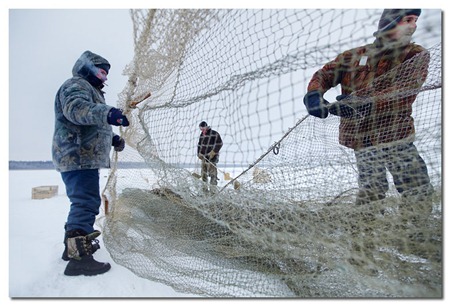 I’m in Abu Dhabi airport on a 12-hour layover. There’s really no better time to reflect on my most recent and final adventure in Belarus, before I head back to Sydney.
With a bit less than a week till my flight I decided that it’ll be a real pity not to visit the Braslav region one last time. When Yuri Ivanych, my friend in Braslav told me that I’d be able to see how the same fishermen brigade which I already photographed works in winter, I was sold on one last visit, much to the dismay of my family in Minsk, and Tanya – my wife.
I’m in Abu Dhabi airport on a 12-hour layover. There’s really no better time to reflect on my most recent and final adventure in Belarus, before I head back to Sydney.
With a bit less than a week till my flight I decided that it’ll be a real pity not to visit the Braslav region one last time. When Yuri Ivanych, my friend in Braslav told me that I’d be able to see how the same fishermen brigade which I already photographed works in winter, I was sold on one last visit, much to the dismay of my family in Minsk, and Tanya – my wife.
The main reason was their concern for my driving ability in winter time. After my small car crash in Poland I had a bigger accident the day before New Year’s Eve. Again - very slippery road, which looked deceitfully decent, I decided to overtake a very slow moving car, but even about 60km/per hour was enough to land my vehicle into a barrier, down a small hill and into a field. A tractor pulled me out and one of those “evacuator” vehicles got the car all the way back to Minsk, as it was not driveable. The story had a happy ending, since no one was hurt and everything was solvable, but understandably my family was concerned.
In any case, I hired a car again and went to Braslav. Luckily everything went very smoothly as far as driving this time, I think I learned my lessons.
Now to the fishermen. The shoot was a dream and a nightmare at the same time. I always wanted to shoot in the winter, in the snow. But that day it was minus 20 Celsius! I will say first of all that the gear held up incredibly well. I shot with the Canon 5D MKII, 20mm f1.8 Sigma and 24-70 f2.8 Canon lenses, I didn’t expect any problems with those, what surprised me was the battery. I filled a 16GB card with stills and even a few videos, the battery still had 28% of life left, I decided to change it simply to avoid missing an important shot when it would finally go flat.
I don’t know how I would rank my own performance. I was in the cold for about 5 hours straight and another two with breaks in a pretty warm car. It’s tough working in such weather. You can’t shoot without gloves, you lose sense of your fingers very quickly, the wind feels like it burns your face and when the sun goes down, staying for a couple of minutes without movement makes your teeth rattle from the cold.
I was not greatly equipped, as far as cold-proof gear for this one, but my friend was impressed with the way I tolerated the conditions. I have to say - it was a great experience, but I won’t be too sad if I don’t have another one like it for a while.
When the fishermen finally pulled out the net, which they managed to spread out under the ice, they didn’t end up with much. Parts of the ice cut the net in a few places and a lot of the fish was lost. Tough day for these guys, they were at the lake for much longer than me and managed to handle it like just another work-day.
At the end me, Yuri Ivanych and the National park driver drove across the frozen lake. In a very timely manner I was told that 10 years ago a jeep went under at about this time of the year, taking four passengers with it. I was advised to hold on to the door handle, to open it and jump, in case the ice cracks. I thought it was a joke, but after seeing Yuri Ivanych holding on to the door handle at the back I realised it wasn’t. The driver joked – if you two are holding on to the handles, what the hell am I meant to do? – Hold on to the wheel! Joked Yuri Ivanych.
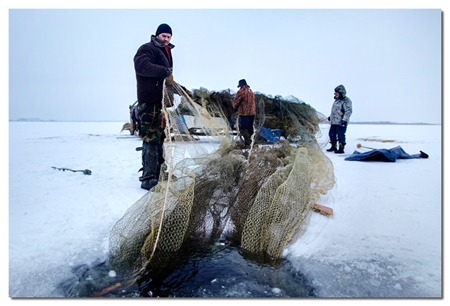 A large hole is made in the ice. On one end fishermen cast a net into the hole.
A large hole is made in the ice. On one end fishermen cast a net into the hole.
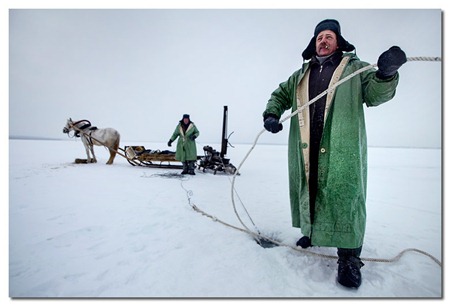 On the other end, fishermen make holes in the ice and use ropes to capture the net and spread it out. The net is pulled by hand at first and later with the help of a motor and a horse.
On the other end, fishermen make holes in the ice and use ropes to capture the net and spread it out. The net is pulled by hand at first and later with the help of a motor and a horse.
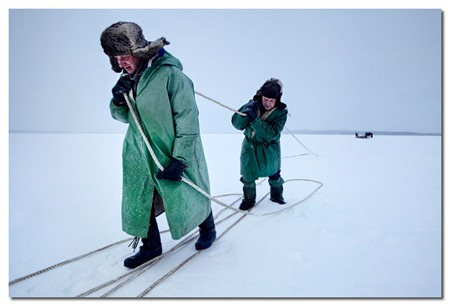 The working conditions are very manual labour intensive, but things weren’t actually this way before. I was told by the fishermen who have been in the “business” for a while that there was more machinery involved during the Soviet times. Tractors did the job of horses and humans. Now it is unclear where the resources are going, one thing for sure the job hasn’t become any easier.
The working conditions are very manual labour intensive, but things weren’t actually this way before. I was told by the fishermen who have been in the “business” for a while that there was more machinery involved during the Soviet times. Tractors did the job of horses and humans. Now it is unclear where the resources are going, one thing for sure the job hasn’t become any easier.
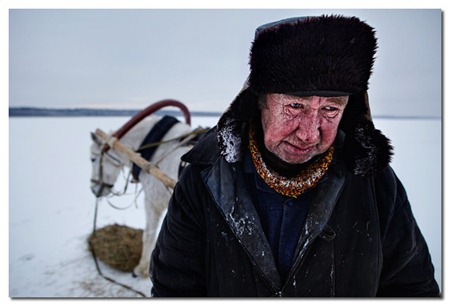 This man has been with the fishermen brigade for a very long time. When I asked him “How’s life?” after arriving, he replied - “Life? What kind of life is this? I’m so sick of this shit, I’ve been doing it for 36 years! It’s f—cking cold out here!” I asked him why he did the job. His reply- “What else is there to do?”
This man has been with the fishermen brigade for a very long time. When I asked him “How’s life?” after arriving, he replied - “Life? What kind of life is this? I’m so sick of this shit, I’ve been doing it for 36 years! It’s f—cking cold out here!” I asked him why he did the job. His reply- “What else is there to do?”
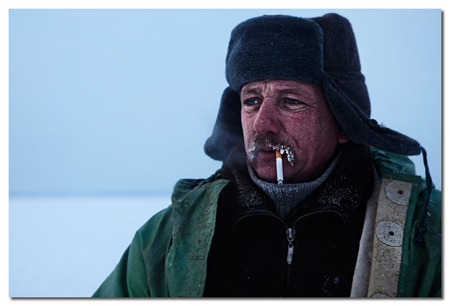 Not all fishermen lack enthusiasm though. The much younger Leonid, despite his frozen moustache tells me that the work isn’t so bad. He’s used to working because he has a big family and “many mouths to feed”. I asked him about the cold. “You don’t feel it while you work, while you move around, it’s not too bad here, if only someone could wipe the snot off my nose, then it would be perfect.” He jokes.
Not all fishermen lack enthusiasm though. The much younger Leonid, despite his frozen moustache tells me that the work isn’t so bad. He’s used to working because he has a big family and “many mouths to feed”. I asked him about the cold. “You don’t feel it while you work, while you move around, it’s not too bad here, if only someone could wipe the snot off my nose, then it would be perfect.” He jokes.
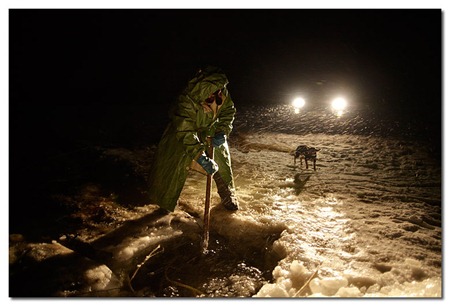 A fisherman puts a rope in the water then stirs it around with a stick to defrost it. His dog, watches on. She followed her owner and stayed by his side in the blistering cold for the entire day.
A fisherman puts a rope in the water then stirs it around with a stick to defrost it. His dog, watches on. She followed her owner and stayed by his side in the blistering cold for the entire day.
The only light comes from the car’s head-lights, however, usually there’s even less light than you see. The car’s lights were only switched-on after my begging, pleading and explaining that I won’t be able to photograph anything without them, at least that helped the fishermen a bit too. I've said it before, it's a tough life. Their salary is about 180,000 Belarussian Rubles per month, that’s a bit over US$60.
That's all for now. My next post will be from home, for the first time in about 5 months.
Summing up my trip and some ideas for the new year
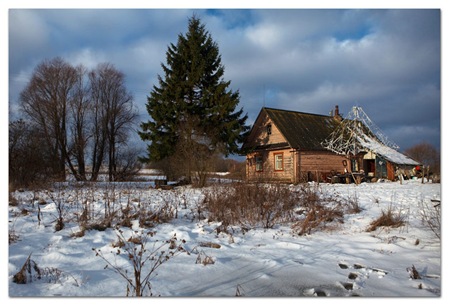 My Eastern Europe trip’s over. For the first time in a long while I am actually happy that a trip has ended. Perhaps it’s because I am still not completely home, but in Belarus, and in some way the journey is still continuing.
My Eastern Europe trip’s over. For the first time in a long while I am actually happy that a trip has ended. Perhaps it’s because I am still not completely home, but in Belarus, and in some way the journey is still continuing.
My incredible bad luck continued on the Poland to Belarus road. I had my first ever car crash of a sort when I went over a pile of snow, slightly lost control of the car and then totally lost control when I pushed the brakes (not the best idea to push the brakes). Luckily there was one of those barriers along the highway that separates lanes from each other, that’s what the car hit, first with the front bumper then after sliding and doing a 180° turn, with the back.
We weren’t going too fast and there was almost no traffic, so we ended up unscathed and didn’t collide with anyone else. The car looked…interesting, I regret not taking photos of it now, but Tanya and I were too busy gaffer-taping the front bumper on, in – 13 C weather.
We somehow made it over the border the next day. After seeing the gaffer-taped bumper, the Belarusian border patrol jokingly asked “Is that a bumper from a BMW or yours?”. The customs people felt so sorry for us they didn’t even bother going through the trunk (which doesn’t open anymore anyway).
The important thing is that we made it back in one piece. I guess there is the argument that we were really unlucky, because of all the things that happened along the way, but on the other hand no one even thought it was possible to go to Romania and back in our little 25-year-old Volkswagen Golf. Go figure.
After spending a few days in Minsk, one of my least favorite cities in the world, we decided to go visit some friends in another city. That’s when the car died again on us. I didn’t bother fixing it this time, simply got a hire-car and drove off to Braslav, the region I passionately spoke about numerous times on my blog.
Driving in winter, especially when there are sudden weather changes is a nightmare. From the icy roads to giant puddles, it’s tough and dangerous. I’d be happy to lie low for a few days and that’s exactly what I’m doing in a friend’s countryside house (that’s a picture of it at the top of the post and those are his “pets” below). Just me Tanya, nature and my computer. :) In reality I have a lot of work to catch up on and I hope that’s what I can do, while getting some peace and quiet that was missing during the constant movement around Eastern Europe.
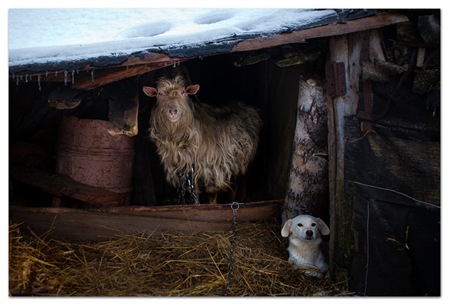
New year is approaching and I already have plenty of exciting plans. Coming back to Braslav in the summer is one idea. It is an amazing region and perhaps my journey around the rest of Eastern Europe made me realize just how special it is. In many ways it’s still virgin, unspoilt, a little wild even. To wander around the villages here is absolutely fascinating and often heartwarming and the natural beauty is unlike anywhere else.
I’m thinking that it may be worth doing a workshop in Braslav or perhaps even trying something new with the good friend I’ve made here (the one whose house I’m staying in) – a guided photo tour of a sort. It’ll be for those who are more comfortable with their photographic abilities and simply want to have an amazing photographic experience, rather than learn a standard workshop. If anyone thinks it’s a good idea, drop me a line or leave a comment on the blog.
Two personal trips which are close to happening:
Another trip to Indonesia and yet another trip to India. I want to buy underwater housing for my Canon 5D MKII and shoot stuff on fishermen in Indonesia. The last time there were just too many times when I was kicking myself for not having some sort of casing.
The India thing is well, India calls and when it calls you go. It seems to be calling me at least once a year, but hey, I still have only just scratched the surface of what can be done there. I’ve got a few particularly exciting things planned, but I won’t reveal too much just yet.
I like to make plans for the future, actually, it’s more like dreaming up things and then working to make them happen. It’s an amazing feeling when you realize that you are living a dream, but it all starts with nothing more than a thought, an idea. I think it’s important to have those plans/dreams, not only for photographers, but for anyone. Make those dreams achievable and then really work to realize them. It’s sort of what I’ve been doing, without having any particular idea of how to make things happen, I simply make them up, dream and somehow everything falls into place, the important thing is to set those goals for yourself. I guess the clichéd yet encouraging and true thing to say is that – if I made it happen, so can you. :)
So I guess before I end this blog post I’d like to ask; what are your photographic plans/dreams for the next year?
Happy new year folks! :)
Too many impressions - too little time
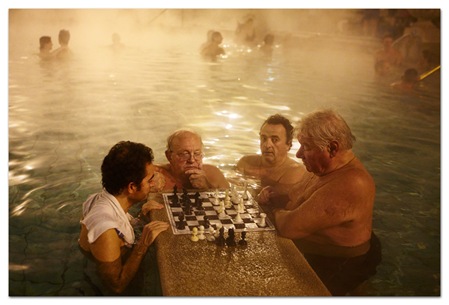 In a day or two Tanya and I go back to Belarus. Though I’ve had more bad luck and troubles on this trip than ever before, it has been a fulfilling nevertheless.
In a day or two Tanya and I go back to Belarus. Though I’ve had more bad luck and troubles on this trip than ever before, it has been a fulfilling nevertheless.
My main goal at the beginning was to visit Romania, get a taste of it and then just see and absorb as much as possible in a limited amount of time in the other countries I visit. That’s pretty much what happened. Along the way I shot some images for the stock agencies I work with, also something I wanted to do.
In a bit over two weeks I’ve been to Poland, Slovakia, Hungary, Slovenia, Austria and Italy. That’s a lot of places in such a short period of time, too many for my liking usually, but this situation was the result of Tanya’s visa limitation and my curiosity outweighing the desire to concentrate on any long-term photographic work.
Just a couple of months ago, the names of the countries and cities I visited were nothing more than that - names. I guess now I have at least some associations with these names and though I don’t pretend to have gained any understanding of the places I’ve been to, I have had a glimpse into a different world, which for me only existed in pictures and guidebooks before.
I feel like I have grown a little photographically too. I understand myself a little better, I understand more what drives and inspires me and what doesn’t so much. For any creative person that’s an important thing. Essentially if we understand that, we know how to push our own buttons, to get those creative juices flowing, rather than wait for some higher power to enlighten us.
And so here’s a quick look at a few of the photos from the last few days.
 The famous Szechenyi thermal baths in Budapest. The image at the top of the post is from there too, it’s kinda weird that there are people playing chess in a pool, but hey, it makes for a good photo subject. These baths are a place I wouldn’t have normally thought to bring my camera to, I wanted to enjoy them myself, but after seeing some of Ami Vitale’s images (she’s one of my fav photogs), I couldn’t resist. So I had my fun in the water and in the spas first and then went out to shoot a few frames.
The famous Szechenyi thermal baths in Budapest. The image at the top of the post is from there too, it’s kinda weird that there are people playing chess in a pool, but hey, it makes for a good photo subject. These baths are a place I wouldn’t have normally thought to bring my camera to, I wanted to enjoy them myself, but after seeing some of Ami Vitale’s images (she’s one of my fav photogs), I couldn’t resist. So I had my fun in the water and in the spas first and then went out to shoot a few frames.
 People enjoying a massage from the strong stream of very warm water. Periodically the whole pool area is enveloped under the steam. I love shooting in these situations, I just wish I had a waterproof camera case to do some stuff from different perspectives.
People enjoying a massage from the strong stream of very warm water. Periodically the whole pool area is enveloped under the steam. I love shooting in these situations, I just wish I had a waterproof camera case to do some stuff from different perspectives.
 From warm thermal baths to the cold snowy mountains of Zakopane, Poland. I’ve wanted to be at the top of snow-peak mountains for some time, but never got the chance, until now. I did it the easy way too, by cable car. :)
From warm thermal baths to the cold snowy mountains of Zakopane, Poland. I’ve wanted to be at the top of snow-peak mountains for some time, but never got the chance, until now. I did it the easy way too, by cable car. :)
 Ski chairs against a mountainous backdrop. I find ski chairs to be pretty photogenic for some reason.
Ski chairs against a mountainous backdrop. I find ski chairs to be pretty photogenic for some reason.
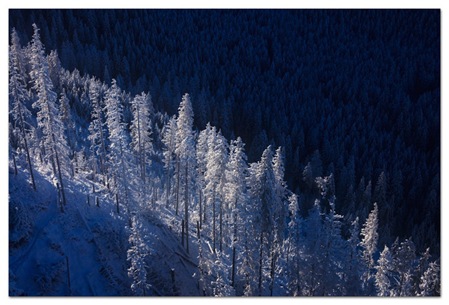 The view from above was almost surreal. Part of the forest was illuminated by the sun while the other was in the shadow. It’s times like these that make me feel like there is more to photography than shooting people.
The view from above was almost surreal. Part of the forest was illuminated by the sun while the other was in the shadow. It’s times like these that make me feel like there is more to photography than shooting people.
That’s all for today. My next post will probably be from Belarus. I hope it snows there and I hope my car makes it. :)
Romanian adventure comes to an end.
 And so, my very short adventure in Romania has come to an end. It was not anywhere near long enough to even scratch the surface here photographically, but I did get a glimpse into a couple of regions in this fascinating country.
The last stop was Maramures, a region which I heard hadn’t changed much over the past couple of centuries. Perhaps it was silly to believe this, but for some reason I did or perhaps just hoped that it would be true.
And so, my very short adventure in Romania has come to an end. It was not anywhere near long enough to even scratch the surface here photographically, but I did get a glimpse into a couple of regions in this fascinating country.
The last stop was Maramures, a region which I heard hadn’t changed much over the past couple of centuries. Perhaps it was silly to believe this, but for some reason I did or perhaps just hoped that it would be true.
In reality Maramures was both – as amazing as I thought it might be and at the same time more visually abhorring than I could have imagined. It seems that in Eastern Europe things change even faster than in Asia and just as is the case with Asia, progress here is not a thing of beauty.
For whatever reason those who have been denied prosperity for so long seem to have a very crass way of showing that prosperity once they obtain it, with disregard for anything that existed before them. Traditional villages of wooden houses which seem to have been built in harmony with the landscape with consideration for the surroundings are very few and far between in most of Maramures these days. They are being knocked down, replaced with huge (and I mean huge) brick and cement structures, which have about as much character as you might expect a concrete slab to have.
This “modernization” thing is a story I’ve seen throughout my travels around different countries. I don’t know how it ends, but I do feel that it’s very worthwhile for a photographer to capture what hasn’t been swallowed up by the so called progress. Luckily in Maramures a little bit of magic still remains. While many of the people are living in the soulless structures, they themselves haven’t lost their souls, nor what makes them visually unique to other Europeans. Perhaps most pleasantly, a lot of them are just as kind and as hospitable as their parents must have taught them to be.
I was reminded a little of India, when the locals almost forced their hospitality upon us, only in India the hospitality takes on the form of tea and food, while in Maramures you have to drink their toxic home-made “Tsuika”, a 50 + degree alcoholic beverage, strong enough to burn a whole in your stomach. After drinking five or six shots of it in the first day I decided that in reply to future offers it would be better for me to drink a tiny bit of it, make a face and say that it is too strong for people from my country, which is not far from the truth.
I would have liked my trip to Maramures to have felt like a trip into a different world, into the past. It wasn’t quite like that, but as I drove my car through the mountains to the Hungarian border, passing old cattle herders in traditional hats, women collecting hay in their unique attires, all while being surrounded by some of the more dramatic scenery one is likely to encounter, I realized – Maramures is still special. It’s not what I wanted it to be, but that doesn’t make it any less special in relation to the rest of the world.
Here are some images of what still remains of the magical Maramures.
 Sheep on their way to be herded up in the hills.
Sheep on their way to be herded up in the hills.
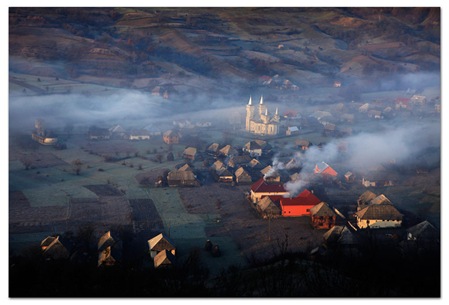 That’s the view the shepherd has when he herds the village’s sheep.
That’s the view the shepherd has when he herds the village’s sheep.
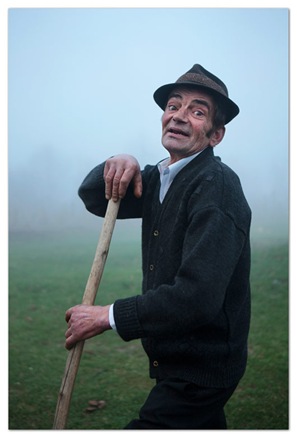 We met this man during a foggy afternoon in a small house, seemingly in the middle of nowhere. I asked if we could take a few photos of him outside. He agreed. As I fired off a few frames, he kept asking - “Am I really that f---ing cool? Is that why you’re photographing me? I mean there are so many other people, but you chose me! I must be something special!”
We met this man during a foggy afternoon in a small house, seemingly in the middle of nowhere. I asked if we could take a few photos of him outside. He agreed. As I fired off a few frames, he kept asking - “Am I really that f---ing cool? Is that why you’re photographing me? I mean there are so many other people, but you chose me! I must be something special!”
 The man had quite a few “tsuikas” and just before he left he decided to chase the dog around. The dog was surprised.
The man had quite a few “tsuikas” and just before he left he decided to chase the dog around. The dog was surprised.
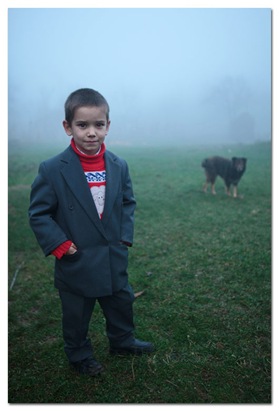 At the same place we found this great, young character. I loved his attire – a child’s sweater with an image of a sheep and a grown man’s suit and trousers.
At the same place we found this great, young character. I loved his attire – a child’s sweater with an image of a sheep and a grown man’s suit and trousers.
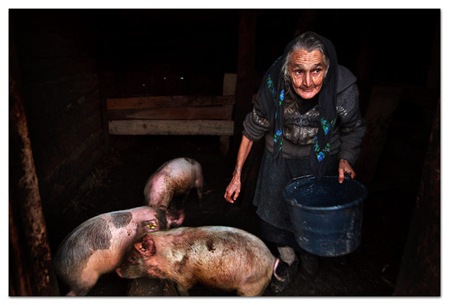 A village woman after feeding her piglets. The villagers of Maramures are very proud of their animals and gladly show them to anyone half-interested.
A village woman after feeding her piglets. The villagers of Maramures are very proud of their animals and gladly show them to anyone half-interested.
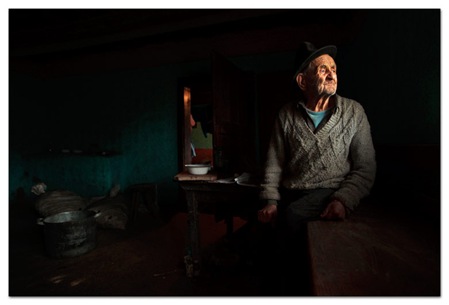 Vlad, one of my traveling companions and I met this elder at the front of his traditional house. We asked if we could come inside and see what it’s like. He let us in and posed for a few photographs. He’s 88 years old and all alone, so I think he was happy to chat to us for a while.
Vlad, one of my traveling companions and I met this elder at the front of his traditional house. We asked if we could come inside and see what it’s like. He let us in and posed for a few photographs. He’s 88 years old and all alone, so I think he was happy to chat to us for a while.
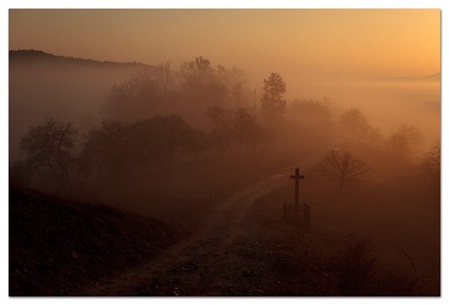 Magical morning in the hills. It’s foggy almost every day during this time of year. When it’s not cloudy, the scenery can be rather special.
Magical morning in the hills. It’s foggy almost every day during this time of year. When it’s not cloudy, the scenery can be rather special.
 Village woman chopping up pumpkins.
Village woman chopping up pumpkins.
I feel a world away from Romania as I type this entry from my room in Krakow, Poland. It’s been a frustrating couple of days since I left Romania, as I had a lot of my things stolen from my car during my overnight stay in Bratislava, Slovakia. Luckily most of the photography related stuff was with me in the hostel room, but I did have to search all of Krakow for a new battery charger for my Canon 5D MKII.
Tomorrow I hit the road again. After being re-united with my dear wife we have decided to drive to Slovenia. If my car makes it, that’s where I’ll be for the next few days.
That’s all for now.
Incredible Romania!
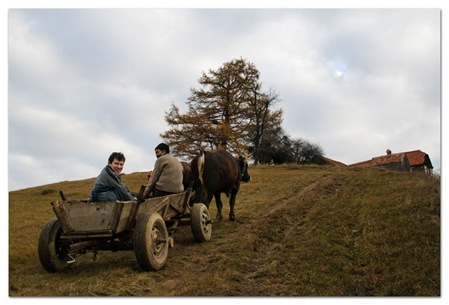 First: The eBook sale is over. Thanks to everyone who purchased them, the response was a very pleasant surprise. To those who missed out - I may have another special some time down the line, so check the blog for details.
First: The eBook sale is over. Thanks to everyone who purchased them, the response was a very pleasant surprise. To those who missed out - I may have another special some time down the line, so check the blog for details.
I’ve been in Romania for about a week. A lot of strong first impressions, but the recurring themes are awe and frustration.
I can’t think of many other places with such photogenic faces and landscapes, that’s the good part. The frustrating part is that I really haven’t done any meaningful photography since I’ve been here. Language and shitty weather have been my biggest obstacles. While I was in Sibiu, one of Romania’s prettiest towns, the cloudy skies and flat light sucked out almost all of the town’s beauty. The clouds also hid the snow peaks of the mountains, I didn’t even know they existed, until the skies cleared a little on my way to Brasov, another picturesque Romanian town.
Finally my inability to speak Romanian has made it next to impossible to communicate in villages, the places where my ideal subjects live, where I want to do most of my shooting.
So far the trip has been much more about getting a feel for the country than anything else. I’m trying to see whether this is a place I’d like to return to, to dig deep and attempt to capture imagery, which I am sure one cannot find in too many other places on the planet. So far I haven’t seen enough, but I have been teased by getting a glimpse of potentially amazing scenarios and looking at the work of a couple of Romanian photographers.
One is Vlad Dumitrescu, a talented young photographer friend I met on OneX and later in person. I’m actually typing this entry from his apartment. You can see his images HERE. The other is someone Vlad introduced me to – Sorin Onisor. I think he has become one of my new favorite photographers and his images have brought me to the verge of madness, thinking about the amazing photo opportunities that exist here. You can see Sorin’s work HERE. Doesn’t seem like the English version works, but the pictures are what matters, so do yourselves a favor and look at Romania through the eyes of someone who really understands this country.
I had some car trouble recently, but after forking out one fourth of the car’s cost to replace the clutch I am set to go spend some time in a small countryside village, one of very few non-commercialized villages here in Transylvania. It’ll be interesting to see what happens, hopefully I can come up with something interesting and put up something more than the image you see of me at the top of the cart (taken by Vlad).
Ok folks, back soon.
The elders of Braslavschina
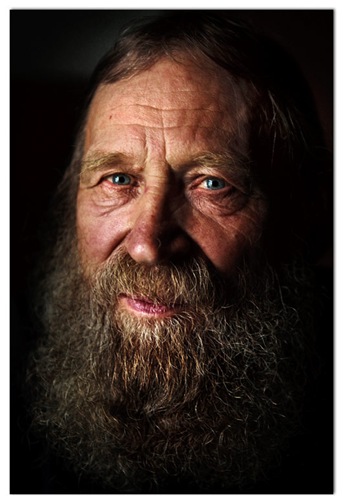 I am getting ready to drive from Belarus to Romania via Poland, Slovakia and Hungary, but here’s a post before I go.
I am getting ready to drive from Belarus to Romania via Poland, Slovakia and Hungary, but here’s a post before I go.
I’ve said goodbye to Braslavschina, the region which I fell in love with over my time there. Well, it’s goodbye for at least a month and a half, not forever. :)
There are a few things which I absolutely love about Braslavschina, but it should come as no surprise that for a photographer of people the best part of any journey is the interaction with the locals. The locals I enjoyed interacting with in particular are the elders of Braslavschina, the fascinating men and women who despite living such tough lives, often even in their old age, remain so generally positive and even naive in the sense that they are pure of the cynicism that fills the world in which they live.
I often heard different variations of the same phrase from the older generation in Braslavschina. “Our lives used to be so difficult before, now everything is so much easier. It’s possible to really live now, pity there’s not much living left.” They would say this with a somewhat sad smile, but a smile nevertheless.
In any case, here are some of the elders of Braslavschina which I had the pleasure to meet and chat with.
We met these two ladies along the road. I simply couldn’t resist the scene, stopped my car and approached this “trio”. I asked where they were heading and got a pretty hilarious reply - “We’re taking the goat to his girlfriend.” Said the woman in the dark coat. “Yes, we’re taking the goat so he can have sex”. Said the woman in red and giggled. It turned out that they were sisters and Yulia, the one in the dark coat, with the bicycle was a pretty fascinating character. We hung out with her a bit, talked and took some more photos.
Yulia is 76 years old, she used to work at the stables when she was young and says that she knows everything there is to know about horses. I was a little shocked when she lifted her leg like this to put the reigns on one of her own horses.
Speaking of horses, Edward was looking for two horses that his grandson had tied up somewhere in the area not far from his home. When I approached, he had actually mistaken me for one of those horses. At 86 he lost most of his sight and almost all of his hearing too. Not a good combination. I told him that his horses where nowhere in sight and then after driving ahead realized that they were about 200 meters behind a patch a location which Edward had no chance of arriving at by himself. We drove Edward to the horses, expecting that he wanted to take them home for the night. All the wanted to do however, was feed one of them apples and check that everything was fine.
Father Timothy, (also pictured at the top of the post) worked as an engineer in the government collective farming system most of his life. By chance he had learned some old Russian language as a child and remembered some prayers from the “Old Russian Orthodox Faith”. When the church father passed away, Timothy was approached by the local devotees to take on the responsibility of leading the prayers. After a year of studying (at the age of 65) and leading prayers he was blessed by the “Old Russian Orthodox” Church and sworn in as a Father himself. We had a good chat with Father Timothy, what impressed me most about him was his openness and lack of religious fanaticism. He said: “What happens in the afterlife? I doubt that anyone of us will know the answer while we’re here. I always say that the most important thing is to lead a decent life, and the rest will take care of itself.”
Though we spent almost an hour chatting to this kind old lady, we never got her name. The wheel in the corner is still used for weaving and at the time of our visit she had actually begun to weave socks for her grandson who visited her every now and then. The dog on the bed is named “Bobik” that name is about the equivalent of Fido in the English-speaking world. She said that Bobik was lucky to be let in indoors. He quickly jumped on the bed and made himself comfortable. Good for me, I feel he adds to the shot.
That’s all for now folks. The next time you’ll hear from me, I’ll be…don’t even know where.

